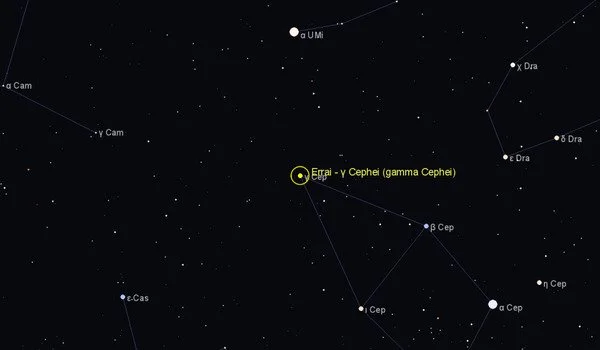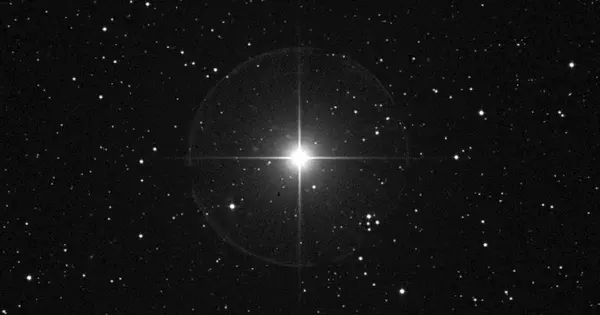Gamma Cephei is a binary star system located 45 light-years away in the constellation Cepheus. It is also known as Errai and is a moderately bright third-magnitude star in the northern constellation Cepheus the King. The primary is an orange giant or subgiant star of stellar class K1 with a red dwarf companion (Gamma Cephei B). An exoplanet (designated Gamma Cephei Ab, later renamed Tadmor) has been confirmed to be orbiting the primary.
Due to the precession of the equinoxes, Gamma Cephei will replace Polaris as the Earth’s northern pole star. It is one of the brightest stars in the sky and has a low-mass companion with a small orbit. It will be closer to the northern celestial pole than Polaris around 3000 CE and will make its closest approach around 4000 CE. The ‘title’ will pass to Iota Cephei sometime around 5200 CE.
Description
Gamma Cephei has an apparent magnitude of 3.21, which is nearly entirely accounted for by Gamma Cephei A. The primary is approximately 3.25 billion years old and has evolved away from the main sequence, having burned through all of the hydrogens in its core.
Orange-yellow Gamma Cephei shines as a circumpolar star over much of the Northern Hemisphere. Circumpolar stars are stars that orbit the Pole Star and never rise or set because they are always above the horizon.

This star’s spectrum has served as one of the stable anchor points by which other stars are classified. It was designated as a standard star for the spectral class K1 IV in 1943, 1953, and 1973. However, in 1989, it was designated as a spectral standard for K1 III-IV. Its spectrum is notable for the strength of its cyano radical (CN) bands. In 2018, the spectrum was analyzed and the best match for a K1 III spectral type was found.
Gamma Cephei B has a mass about 0.40 times that of the Sun. It is most likely a red dwarf of class M4, 6.2 magnitudes fainter than the primary. It is assumed to be of similar age to its primary.
γ Cephei is catalogued as a suspected variable star with a brightness range between magnitudes 3.18 and 3.24, based on its inclusion in an 1884 list of suspected variable stars.
Planetary system
In 1988, a planet orbiting Gamma Cephei A with a period of 2.7 years was discovered. It was also announced in 1989 that it existed. This was the first confirmed extrasolar planet, and its ostensible discovery was based on the same radial velocity technique that others would later use successfully. The claim was challenged in 1992 by a paper that supported K-giant variability with a period equal to the stellar rotation, but the existence of a planet with an orbital period of about 2.5 years was confirmed in 2002.












